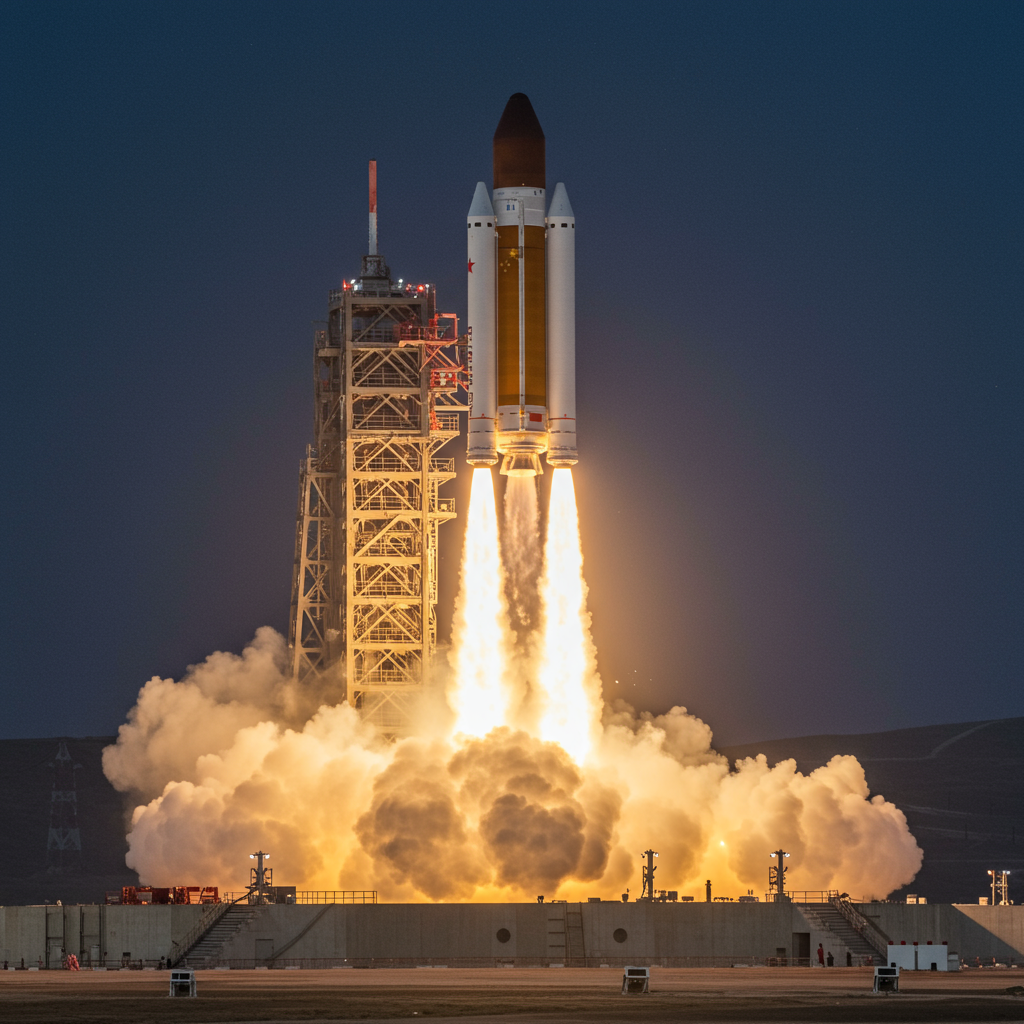China has successfully completed a critical safety test for its next-generation crewed spacecraft, the Mengzhou, marking a pivotal step towards its ambitious goal of landing astronauts on the moon by 2030. The zero-altitude escape flight test, often referred to as a pad abort test, was conducted at the Jiuquan Satellite Launch Center in northwest China on June 17, 2025.
This significant test, only the second of its kind performed by China for a crewed spacecraft (the first was for the Shenzhou spaceship in 1998), demonstrated the emergency escape system’s ability to rapidly and safely pull astronauts away from the launch vehicle in the event of a catastrophic failure on the launch pad.
Why Pad Abort Tests are Critical
An emergency escape system is the ultimate life-saving measure for astronauts during the most dangerous phase of a mission: liftoff. Designed to activate the moment danger arises after the crew is aboard, it acts as a vital last line of defense. According to Yang Yuguang, chair of the Space Transportation Committee of the International Astronautical Federation, a zero-altitude test specifically verifies the system’s capability even if a critical danger, such as a rocket explosion, occurs directly on the launch tower where the vehicle has no initial velocity.
Experts emphasize the extreme technical difficulty of such a test. Executing the escape maneuver from a standstill requires milliseconds-level precision. As Li Zhijie from the China Aerospace Science and Technology Corporation (CASC) noted, systems must coordinate ignition, separation, and parachute deployment with exceptional accuracy and in extremely limited time and space. The escape engines must generate immense thrust very quickly, and aerodynamic separation must occur flawlessly amidst potential rocket exhaust. “Every second counts” and “every system has to work flawlessly” in this scenario, according to Li. Fan Songtao, also from CASC, highlighted that the powerful rockets needed for lunar missions, like the upcoming Long March 10, bring higher risk, necessitating a faster and farther-reaching escape system.
A Rapid and Successful Escape
The test sequence at Jiuquan unfolded with precision. At 12:30 pm Beijing time, the Mengzhou spacecraft’s solid rocket escape engines ignited, instantly propelling the capsule and its associated tower upwards. Approximately 20 seconds later, upon reaching the designated altitude, the return capsule cleanly separated from the escape tower. Its parachutes deployed as planned, guiding the capsule back towards the ground. By 12:32 pm BJT, just two minutes after ignition, the return capsule had safely touched down within the designated area, cushioned by its airbag system. China’s human spaceflight agency, CMSEO, officially declared the test a “complete success.”
This successful test validated the emergency escape system’s design accuracy, compatibility, and the complex sequence of separation and trajectory control. It also provided crucial real-flight data for ongoing development.
Introducing the Mengzhou Spacecraft
The Mengzhou (meaning “Dream Vessel”) is China’s domestically designed next-generation spacecraft intended for crewed transportation between Earth and space. Featuring a modular design, it is envisioned in variants for both low Earth orbit (LEO) missions, potentially carrying up to seven astronauts to the Tiangong space station, and dedicated crewed lunar missions.
A key advancement highlighted by CMSEO is that, compared to the previous Shenzhou spacecraft where the rocket primarily handled aborts, the Mengzhou’s enhanced system integrates and assumes overall responsibility for both escape (getting away from danger) and rescue functions (ensuring safe landing).
Towards China’s Lunar Landing
The successful pad abort test for Mengzhou is a critical technical achievement that significantly enhances astronaut safety for future high-energy launches needed for lunar journeys. It is viewed as a decisive step that “officially sounded the trumpet for China’s manned lunar exploration,” moving the program into a new stage of development.
This progress is part of China’s broader, accelerating efforts towards putting its taikonauts on the moon. Alongside the Mengzhou spacecraft, development is steadily progressing on other essential components of the lunar architecture, including the powerful Long March 10 carrier rocket and a dedicated lunar lander (sometimes referred to as Lanyue, meaning “Embracing the Moon”). Construction of dedicated launch facilities for crewed lunar missions at the Wenchang spaceport is also underway.
Validating crew safety systems through tests like this pad abort is standard practice for spacefaring nations aiming for human spaceflight. NASA’s Orion spacecraft, central to the U.S. Artemis program which aims to return astronauts to the moon (with Artemis II expected in 2026), has also undergone similar rigorous testing, including a pad abort test in 2010.
Looking ahead, China plans to conduct further tests for the Mengzhou system, including an in-flight escape test at maximum dynamic pressure, later in the year.
The successful zero-altitude escape test for Mengzhou provides an important technical foundation, representing a solid and confident step towards achieving China’s goal of lunar exploration and landing astronauts on the moon.




